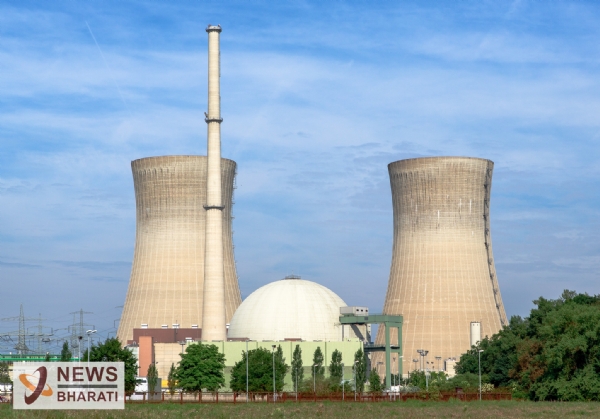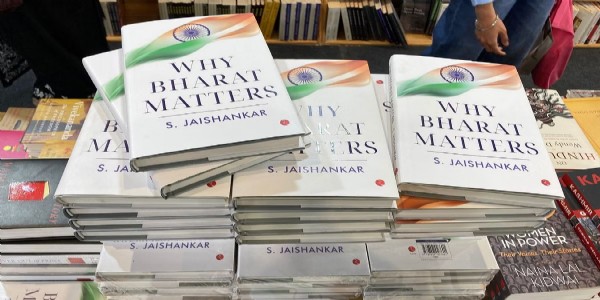Nuclear Energy- Neglected Green Source of Energy # 2
This is the second part of articles highlighting the importance of nuclear power. In this article we will see why nuclear energy is important and it should not be neglected.
Total Views | 125
In the previous article, we read about the current situation of the energy sector in India. We also saw, which resource contributes how much (in terms of percentage) to energy production. In this article, we will read how nuclear energy can substitute coal-based energy power plants and also what are the main problems related to nuclear power. We will also have a look at India’s way forward.

As seen before, coal and nuclear power plants both work on the same philosophy of heating the water and rotating turbines with steam. Carbon bears the baseload of India’s energy consumption. Baseload power refers to the minimum amount of electric power needed to supply the electrical grid at any given time. If all coal-based power plants are closed then, it will create a void. Nuclear power plants; like coal power plants, can provide energy around the clock and are not affected by the weather. Also, atomic power generates more energy than traditional fuels. According to the European Nuclear Society (ENS) Website, 1kg U-235 releases 19 billion kilocalories of energy during the complete fission process, equivalent to 2.7 million kg of coal. Hence, we can understand that the same amount of energy as much as coal power plants generating can be generated with a smaller number of atomic power plants.
The additional benefit of nuclear power plants is that they need to be refuelled once in two or three years depending on various factors. Whereas, coal-based thermal power plants require a daily supply of coal and an inventory of some months at least.
Also Read: COP27- Way Forward for India
Solar and wind energy, though very favourite for many people, the energy generation from them at any given point of time is highly dependent upon the weather. E.g., a Solar power plant on a sunny day would be more productive, but on days when the sky is covered with clouds, it will be less productive. In the case of India, cannot be relied upon it at all, especially during monsoon season. Similarly, in the case of wind energy in the absence of wind, there won’t be power generation, whereas on windy days there would be excess power generation. Such surges are dangerous for the grid and also very inconvenient for planning.
Another similarity is that the output from the plant can be controlled as per the requirement. The energy generation in atomic power can be controlled by controlling the nuclear reaction between the fuel rods and controlling the heat generation. Therefore, it can be used with a mix of other sources of energy. When other sources are having a high output, atomic power plants can reduce the production and when required, the atomic output can be increased. This extreme control over output makes it more suitable to replace coal.
Hurdles and Way forward for India
Atom is an abundant source of power. We have seen how much power it can generate. Yet there are some hurdles in harnessing this abundance god gifted power.
Also Read: India’s Green Energy Story
There are various sources of atomic power, but Uranium-235 is one of the most commonly used reactor fuels. In nature, Uranium is generally found in two isotopes U-235 and U-238. Naturally occurring Uranium has only a 0.7% concentration of U-235 (which is also called enriched Uranium) and the rest is mostly U-238, which directly does not contribute to the fission process. This uranium has to undergo an enrichment process where the naturally occurring Uranium is converted into a usable reactor. As India has nearly no sources of Uranium, India needs to import enriched reactor fuel.
Nuclear power plants also produce radioactive waste. IAEA has categorised this waste into various grades depending on its radioactivity. The most hazardous waste is used reactor fuel and other components of the reactor from the decommissioned plant. There are international guidelines to treat this waste, yet it remains a threat even though as a standard procedure it is buried deep into the ground. If India, plans to increase its dependency on nuclear power plants, then we must focus on the creation of permanent facilities to dispose of radioactive waste.
Thorium is another low-grade radioactive material hence it can also be used in nuclear power plants. As per World Nuclear Association data, India has the highest sources of Thorium in the world.
Unfortunately, the process of creating a reactor fuel from naturally occurring Thorium is very much more tedious than Uranium. India created its first Thorium fuel nuclear power plant at Kalpakam in 1985. In 2022, it reached its maximum operational capacity of 40 MWts.
Also Read: Forest Cover in India: Some facts
India has designed three staged nuclear programme to use available Thorium The three-stage nuclear power programme aims to multiply the domestically available fissile resource through the use of natural Uranium in Pressurised Heavy Water Reactors, followed by the use of Plutonium obtained from the spent fuel of Pressurised Heavy Water Reactors in Fast Breeder Reactors. Large-scale use of Thorium will subsequently follow making use of the Uranium-233 that will be bred in Reactors. The utilisation of Thorium, as a practically inexhaustible energy source, has been contemplated during the third stage of the Indian Nuclear Programme.
Recently the director general of International Atomic Energy (IAEA) Rafael Mariano spoke to Vishwa Mohan from The Times of India. In the interview, he expressed his view that India is one of the most advanced countries in many areas of nuclear power. He believed that with a range of reactors India has the potential to become the leading country in nuclear power. He also highlighted the importance of nuclear power plants in achieving the target of keeping global warming below 1.5 degree celcius.
With the given potential and importance, India must not waste this abundant source of energy. Instead of panicking about nuclear power plants, we can harness atomic power for the greater good. India as a nation, because of its inherent capacities can surely phase out coal power plants and embrace atomic power. This will help us in achieving our own NDC and long-term goal of becoming net zero countries by 2070.
Bharati Web
Mes, Pune







